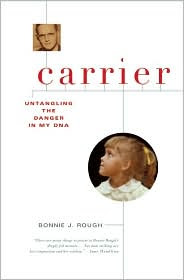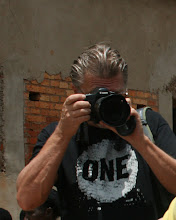Grace
I am considered a slight woman of middle age who is at the cross roads in my life. I have made great strides to surrender and stretch myself to a deeper sense of consciousness.. I was soaking up every bit of awareness I could, like a flower in rain.
I was departing from my home state of Maryland and traveling to a country that was slightly smaller in size but populated with 8.4 million people. I was curiously fascinated about Rwanda’s population of 898 people per sq mile in comparison to the US’s density of 84 per sq mile. Here I was, traveling to this breathtaking country. I could not image a more beautiful place than the rolling hills of Rwanda, where the red earth flows through Rwanda as a vein. The narrow red dirt paths appear like hundreds of veins against the green vegetation. The soil reacts in great movement to the rains and at times causes great turbulence.
I fully understood that to experience the beautiful colors of Rwanda – one had to identify with the spirit of the country and its people. I came in preparation.
I rode silently in the passenger van; I was staring out the smudged window focusing on the Rwandans who were walking along side the road. It turned out to be a perfect day – the sun was poetically charging the sky as the van navigated its way on the undeveloped dirt roads - the roads were deeply rutted from the seasonal rains.
The roadside has its own distinct way of life in Rwanda – the roadside travelers carry loads of fruit, jerry cans, wood and rice sacks on their heads; they remain forward focused – their steps are taken at a slow methodical pace. Small children carry infants on their backs or tie them securely to their petite hips. There is no evidence of haste, frustration, or unrest – there is just this silent mystic movement.
My concentration lost its sense of the present; I drifted back to the morning’s World Nutritional Conference – where the point of reference was the Number 4 ranked food crop of the world – The Banana. The Banana is rated as the number one fruit in America where an average of 26 pounds of bananas are consumed per person per year – Rwanda consumes 550 pounds per person per year. Clearly the statistics showed the banana being among the healthiest of fruits. The studies were all conclusive – there were significant health benefits from bananas for anemia, blood pressure, brainpower, constipation, depression and PMS. I was especially interested in the conversation I overheard from two medical doctors. They were contemplating about a tribal healing practice where rubbing the inside of the banana skin on a mosquito bite reduces swelling and irritation.
The van slowed and I quickly changed my focus. We stopped in front of the guest house - the day was cloudless, a perfect afternoon.
The bougainvillea blooms were still dripping from the tropical downpour earlier in the day. I made my way to the rocked terrace joining my host and my friend Gahiji (his Rwandan name meaning hunter and seeker). The house girl offered me a glass of Cuvee Millee Collins wine – known as the best banana wine in the country. I closed my eyes and lifted my chin and savored the taste – the wine was quite fine – a sherry-like flavor. Gahiji, my Rwandan interpreter, was taking pleasure in his tall mug of Rwanda’s brewed banana beer called Urgwagwa.
I slumped my body comfortably in the faded wicker lounge chair. I noticed the red clay colored hut across the road. The walls were covered in bright shades of bougainvillea and there were rows of corn and the daisy-like pyrethrums hanging from the banana leaf roof. The hut was marked with a sprig of flowers tied to a bamboo pole – a sign that a batch of banana beer was fermenting inside. At this time of day, the family was probably cooking a single pot of banana and beans, in questionable water, on an open flame inside the house: only a minimal amount of smoke is vented through an inverted cone at the top of the hut. The heat keeps the family warm but it has caused terrible respiratory problem for their elderly grandmother.
I looked over at Gahiji and he was quietly enjoying his brewed banana beer. Earlier in the week, during my visit to the Kayonza village, a group of villagers, mostly women with babies tied to their backs, gathered and worked together peeling hundreds of bananas. After peeling, they cover the bananas with grass and banana leaves. Holding their colorful skirts knee high; three women set out to smash the life out of the bananas – they work feverishly for thirty minutes until it was liquefied – they added a little sorghum to help the fermenting process. The villagers then gathered the banana peels (rich in potassium and calcium) and spread them over the fields as fertilizer. Gahiji boasted to the visiting on lookers about the process being a mere eight days from picking to drinking.
Before I made her way back to the guest house I stopped to visit with the young boys along the roadside. They were selling Banana Juice, banana soda, banana jelly and loaves of banana bread. Several banana leaf bundles that housed the fresh eggs were scattered on the ground. After a challenging exchange of conversation, I proceeded to the guesthouse through a thick forest of banana trees; I came upon a group of women who were trying to escape the blistering sun and were sitting in the shade under the narrow overhang of their thatched roof. I stood there for a few minutes observing them making baskets from natural banana leaves. One by one, they stopped and extended their small weathered hands in greeting. As I stepped away, I paused, and glanced skyward with a grateful smile.
Back at the guest house the host poured me another glass of Cuvee Millees Collins wine. Dinner was served shortly thereafter with local dishes of lamb chops – fried bananas – central Africa lake fish cooked in butter and a side-dish of matoke, bland mashed plantains (plantains being a close relative of the banana). A meal without matoke is considered not a meal at all.
The conversation at dinner became very engaged. The core of the discussion was focused on agricultural farming of the banana. Rwanda is a land blessed with rich volcanic soil and bears two million tons of bananas a year.
With my quiet, but powerful voice, I empowered to speak and expressed my concern for the future of this significant fruit. The banana being seedless and a mature cousin of the wild herb – is genetically vulnerable. My main concern was about the widespread banana disease of leaf fungus. Everyone agreed that the bananas are an essential resource in Rwanda and a mainstay in the every day lives of its people.
A knock at the back entryway interrupted the discussion – the young housemother announced that Isa Mugabe was calling. There he stood with 60 pounds of bananas on his head – he spoke eagerly in Kinyarwanda - teasing me - telling me that his head was his third arm and is the best way to carry heavy loads. I responded to his challenge and reached for the branch of bananas; with Isa’s help, I balanced them on my head. Isa’s strong, deep, dark eyes and his signature smile acknowledged my playful efforts.
It was the last day in Rwanda and I tried consciously not to paint in any clouds of regret in this day. Rather I concentrated and focused on the immediate chore of packing and than leaving. I decided to immerse myself in each moment, to both stretch out the day and to see what final inner dialogue this place had to offer. I packed my treasures of banana baskets, banana leaf cards, handcrafted banana figurines and the carefully wrapped two bottles of Cuvee Millee Collins wine. The conference material was attentively tucked into my briefcase – I was anxious to share my new information.
Without incident I made it through the long security line. Once seated on the plane I closed her eyes, my heart was full, memories were fresh in my mind as I drifted off to sleep. Sooner than expected I was awakened from a deeper sleep, a flight attendant gently tapped me on the shoulder to prepare me for landing. I was finally home, back to my family, back to my country.
I cleared customs in record time. I walked down the l-shaped corridor, grouped with my new friends, colleagues and my enriched memories. The storybook travel girl in me wondered if life could get any better – then it did – there in front of me was my husband and family.
Weeks later the embers of my trip had not yet gone out. The stories were still sharply etched in my mind – stories I would never forget.
Before my journey to Rwanda I was unripe and difficult to peel – a green banana. Now, with new ripeness in my life, the flavors are sweet instead of tart; I feel softer and more supple.


















